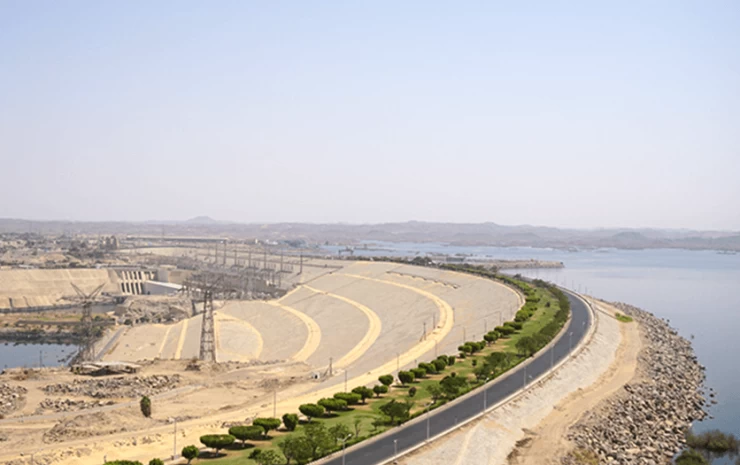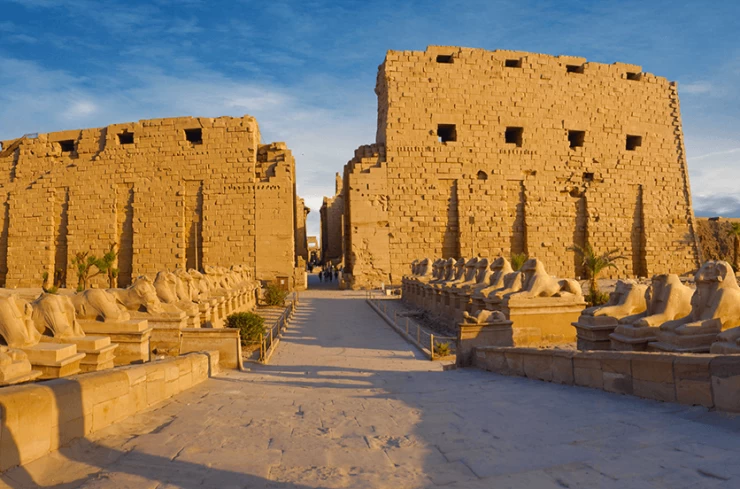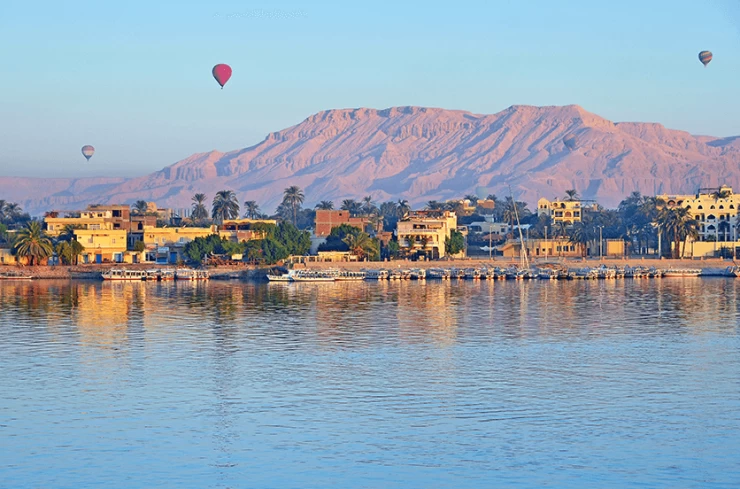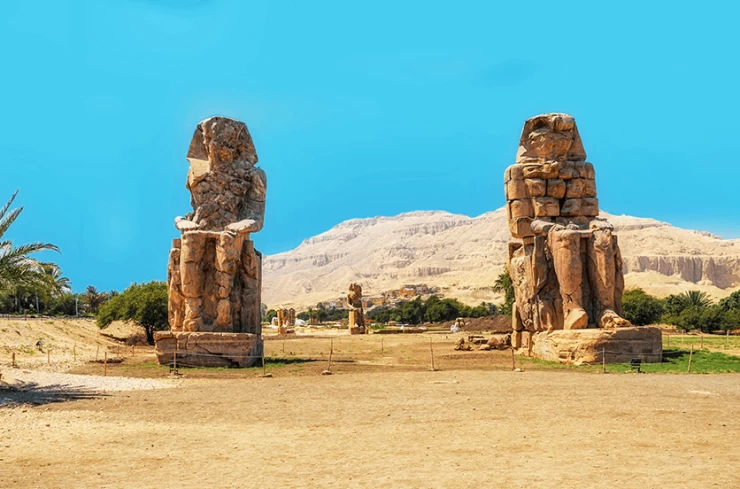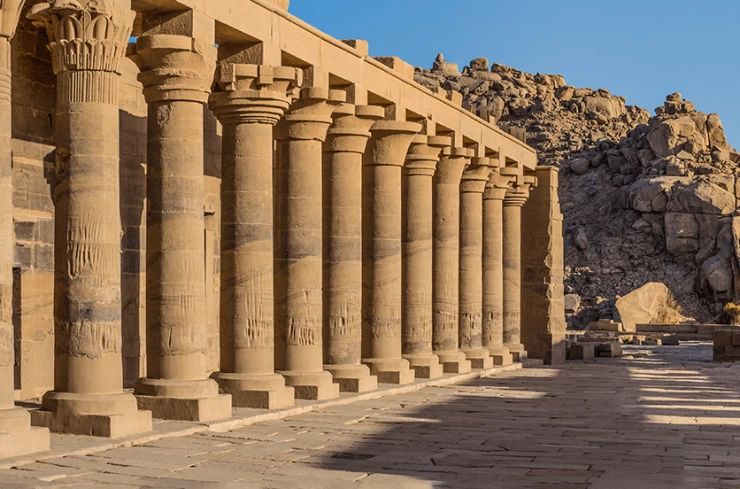After your second breakfast aboard the 5-star Nile cruise, we will start our day tour with a pick-up from your cruise ship to explore the west bank of Luxor in a private air-conditioned car to ensure your comfort.
First, the guide will take you to the Temple of Queen Hatshepsut, which was constructed in front of the Temple of Karnak by Queen Hatshepsut (1473–1458 BC). Hatshepsut's temple was called in ancient Egyptian “Jisro Jisro,” meaning the most sacred of the sacred, and consists of three stepped levels at the bottom of the valley, each with a row of columns at its end, and on the upper level there is an open courtyard behind its row of columns, with statues of Hatshepsut as Osiris, the god of the dead, in front of which were statues of Hatshepsut. The temple was not only dedicated to Hatshepsut but also included parts dedicated to her father, King Thutmose I, to the goddess Hathor, and to the goddess Anubis, as well as dedicating an open compartment to the sky, dedicated to the sun god “Ra Hor Akhti.”
Next, we shall investigate the Valley of the Kings, which got its name because the majority of the monarchs of the New Kingdom's XVIII, XIX, and XX dynasties (c. 1550–1069) were buried on the west bank of the ancient city of Thebes (modern-day Luxor) in a dry river valley.. but this name is not entirely accurate, as some members of the royal family other than the kings were buried there, as were some non-royal individuals. The Valley of the Kings is divided into the eastern and western valleys, the eastern part being the more famous of the two, as the western valley contains few tombs. there are around 60 tombs in the Valley of the Kings, in addition to 20 unfinished tombs that are merely pits.
Our day will end with a visit to the Colossi of Memnon following our tour of the Valley of the Kings. The two statues show King Amenhotep III sitting on the throne with a low cushion and his hands on his feet, wearing the royal crown on his head. To the right of his legs is a small statue of his wife. On both sides of the throne is an inscription depicting the god of the Nile, connecting the papyrus and lotus plants (Delta and Upper Egypt) with their respective symbols, signaling the unification of the country.
Finally, we return you to your cruise ship, where you will enjoy a delicious lunch and dinner on board your Nile cruise as you cruise to Edfu.
Overnight on board your Nile cruise.



